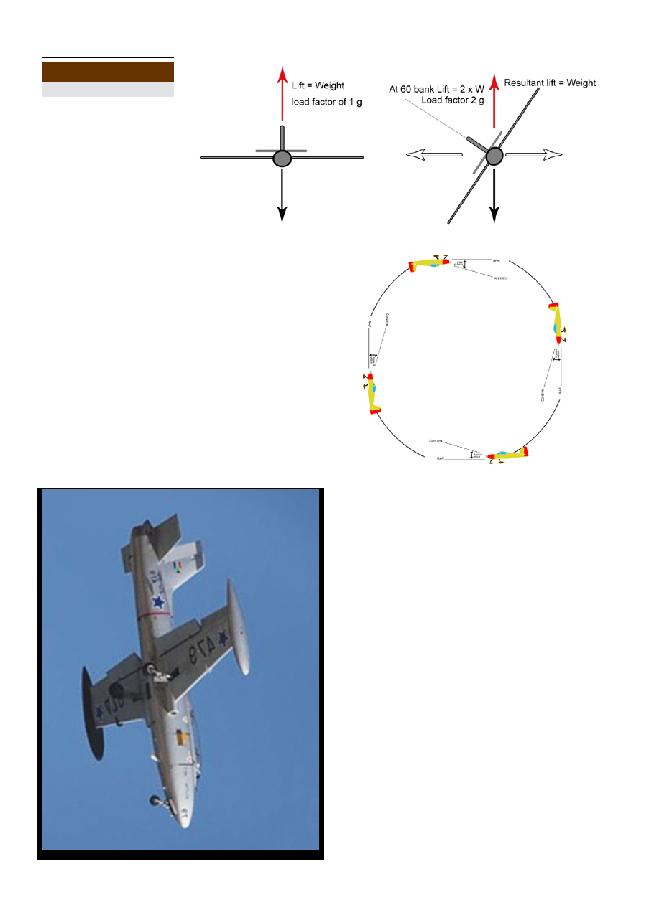
60
GA
/ Vol. 5 / No.9 / SEPTEMBER 2013
Ask any new pilot or some
instructors to describe the symptoms
of a stall and you will get the
classic, nose high, speed low,
sloppy controls. A pilot would need
to be deaf dumb and blind to stall
an aircraft in those conditions.
Well the truth is that those are not the
symptoms of the common or garden
stall encountered by most pilots.
The only true indication of a stall
is the angle off attack between the
cord line and the relative airflow...
when the angle of attack reaches
the critical angle, the airflow breaks
away and the wing stalls. The
aircraft attitude in relation to mother
earth is irrelevant, as is the speed
or power at the time of the stall.
During my time at the regularity
body, I was told on a number of
occasions that the aircraft in the
particular accident could not have
been stalled as the nose was too low,
the speed high or the aircraft had lots
of power on. The highest speed stall
I can remember was during air to air
combat training when I was closing
Training
by Neil Thomas
in on the "bogey" at 250 kts plus
in a descending spiral turn at 100%
power, when I pulled too hard and
the "g" meter clicked over at 7.5 "g",
The mathematics are quite simple.
The manoeuvre stalling speed is
Vb = of g. Stalling speed of
98 kts x 2.75 = 265 kts
The Impala departed from her
flight path, snapped into a violent
autorotation out of the turn, I
applied the standard stall recovery,
stick forward, opposite rudder to
the wing drop, and much too my
surprise the Impala recovered and
I slotted in behind the "bogey".....
in gun range. The instructor in the
back seat thought I had done the
manoeuvre deliberately and gave
me a roasting. While practicing
Advanced
Stalling explained
over Durban International for Silver
Falcons display for the Virginia
air show in 1990, I had pulled the
Impala up into a vertical tail slide,
the Impala slid backwards for a
few feet and the hammer headed
over onto her back away from my
departure line, the nose fishtailed
a few times stopping with the nose
vertically down pointing at the oil
refinery, with the speed increasing
slowly with full power on the RR
Viper engine. The other 4 aircraft in
the formation were heading towards
me and I needed to clear the airspace
but was 60 degrees off my line, easy,
roll to the right and pull out of dive
... another mathematical lesson.
What effect has the angle of bank on
the stalling speed ... At 60 degree
bank the stall speed has doubled,
so with the nose pointing vertically
downwards and rolling to the right
the bank angle was anybodies guess,
the result was far more predictable,
a vertical down autorotation in a
jet aircraft 3 000 foot above the oil
refinery. Once again, unload aircraft
... stick in opposite direction of stall,
opposite rudder and autorotation
stopped. The observers on the ground
said it looked fantastic ... my feet
were still shaking when I landed.
I do a lot of basic aerobatic
training and it is quite frightening
to see the level of competency of
South African pilots when it comes
to handing an aircraft at low speed,
high angles of bank or very high
or low nose attitude. Most pilots
have very little understanding of the
forces acting on an aircraft during
advanced manoeuvring. Ask any
pilot in straight and level erect flight,
if the aircraft stalls, the nose will
pitch towards the undercarriage. I
hope we all agree on that, yet when
you ask pilots when at the top of a
loop (inverted) close to the stalling
speed VB, if you defect the elevator
UP, or stick back into the tummy,
when the aircraft stalls the nose with
pitch towards the ground because of
gravity, the problem is that the aircraft
does not know where the ground
is. Laurie Kay or Larry as I used to
call him, summed it up beautifully,
he said" when you pull too hard at
the top of loop, one wing will go
up and the other down," and that
is what happens. The nose pitches
towards the undercarriage, one
wing drops and the aircraft departs
normal flight. Recovery actions;
stick forward and opposite rudder.
During any manoeuvre where
the aircraft is subject to more that the
normal gravitational force of 1 "g",
by definition the aircraft has to be
subscribing a circular flight path, ie in
a turn or loop or combination thereof.
Lets start with a turn, during the turn

